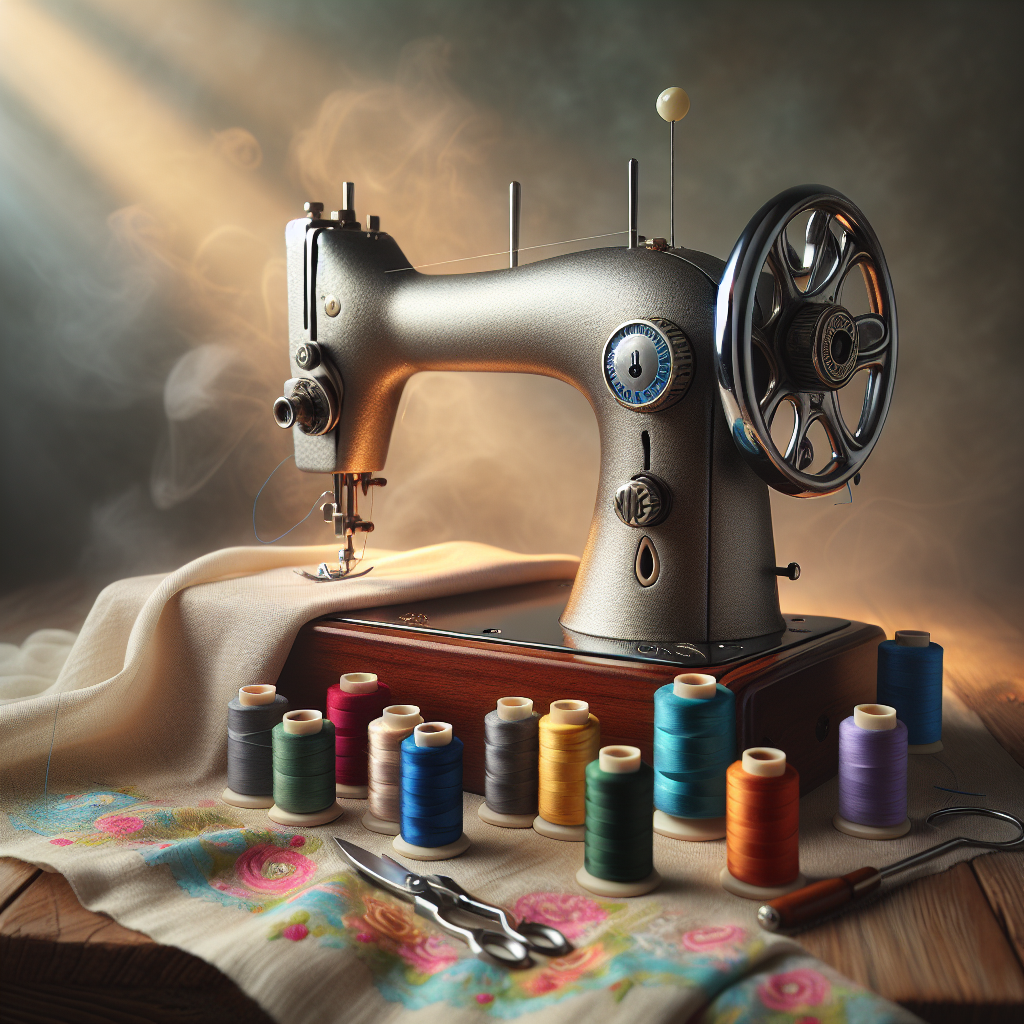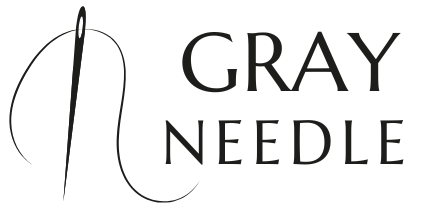Before diving into how to adjust tension on a sewing machine, it’s essential to understand the basics of sewing machine tension. Tension is the amount of pull on the thread as it passes through the machine and interacts with the fabric. Proper tension is crucial for achieving perfect stitches—too tight, and the fabric may pucker; too loose, and stitches can appear sloppy.
Each sewing machine has a tension dial, which allows you to adjust the tension settings for both the upper and lower threads. Here are some key points to consider:
- Upper Thread Tension: This is controlled by the dial on the top of your machine and influences the tightness of the top stitch.
- Lower Thread Tension: This is generally adjusted via the bobbin case. Ensuring the lower thread tension works in harmony with the upper tension is vital.
- Fabric Type: Different fabrics require different tension settings. For instance, lightweight fabrics may need lower tension, while thicker materials typically require higher settings.
Understanding these aspects will help you make informed adjustments to your sewing machine. If you’re eager to master your machine and achieve flawless stitching, visit our website to learn more and get started today! Click here.
Identifying Tension Issues in Sewing

Identifying tension issues in sewing is crucial for achieving quality results in your projects. Many sewists encounter problems that can often be traced back to incorrect tension settings. Here are some common symptoms of tension issues:
- Puckering: If the fabric appears to be gathering or puckering, it often indicates that the upper thread tension is too tight. This can create a bunched-up effect on the fabric surface.
- Loose Stitches: Stitches that seem to be loose or are easily pulled apart are a sign that the tension is too low. This may lead to fabric fraying or poor seam strength.
- Thread Breakage: If your threads keep breaking, it could be due to excessive tension. A thread that is too tight can lead to unnecessary stress on the fibers.
- Uneven Stitches: Stitches that vary in appearance, such as some being too tight and others too loose, may suggest that the tension is inconsistent. This can happen due to improper threading or tension settings.
To effectively diagnose these issues, it is beneficial to perform a test stitch on a scrap piece of fabric similar to your project. This allows you to see how the tension is working and make necessary adjustments before starting on your main piece.
Step-by-Step Guide to Adjusting Tension
Adjusting the tension on your sewing machine may seem intimidating, but following a step-by-step guide can make the process straightforward and manageable. Here’s how to do it:
- Understand Your Machine: Before making adjustments, refer to your sewing machine’s manual. Each model has specific instructions and settings for adjusting tension.
- Prepare Your Materials: Gather your sewing machine, fabric, thread, and scissors. Ensure you have a scrap piece of fabric of the same type you will be using for your project.
- Check the Threading: Improper threading can cause tension issues. Make sure the upper thread is threaded correctly through the machine and the bobbin is inserted properly.
- Start with the Default Setting: Begin with the recommended tension setting from your machine’s manual. This is usually a good starting point.
- Test Stitch: Sew a few stitches on your scrap fabric. Examine the stitches closely for any signs of tension issues, such as puckering or loose stitches.
- Make Adjustments: If you notice tension problems, adjust the upper thread tension dial. Turn it slightly in one direction, test sew again, and observe the results.
- Repeat as Necessary: Continue to make small adjustments and test stitches until you achieve the desired tension. It may take a few tries to get it just right.
By following this simple step-by-step guide, you’ll be able to adjust the tension on your sewing machine with confidence, leading to better stitching results in your projects.
Tips for Maintaining Proper Tension Settings

Maintaining proper tension settings on your sewing machine is crucial for achieving consistent and high-quality stitches. Here are some valuable tips to help you keep your tension in check:
- Regularly Check Threading: Always ensure that both the upper thread and bobbin are threaded correctly. Incorrect threading can lead to tension problems.
- Use Quality Thread: Invest in high-quality thread that is compatible with your fabric type. Poor-quality threads can cause uneven tension and breakage.
- Keep Your Machine Clean: Dust and lint can accumulate in your machine, affecting its performance. Regularly clean your sewing machine according to the manufacturer’s instructions to ensure optimal functionality.
- Test Stitches Before Starting: Before diving into a new project, always perform a test stitch on a scrap piece of fabric. This helps you catch any tension issues early on.
- Adjust for Different Fabrics: Different fabrics require different tension settings. For instance, thicker fabrics may need looser tension, while lighter fabrics may require tighter tension.
- Use the Right Needle: Ensure that you are using the correct needle size and type for your fabric. A mismatched needle can cause tension problems and affect your stitching.
- Keep a Reference: Take notes of your tension settings for different fabrics or projects. This can save time in the future when you need to replicate the same results.
By implementing these tips for maintaining proper tension settings, you can enhance your sewing experience and achieve beautiful, professional-looking results every time.
Common Mistakes to Avoid When Adjusting Tension

Understanding the common mistakes made while adjusting tension can significantly improve your sewing experience. Here are some pitfalls to avoid:
- Neglecting the Manual: Every sewing machine is different, and ignoring the manufacturer’s manual can lead to improper adjustments. Always refer to your manual for specific guidance on tension settings.
- Making Large Adjustments: When tweaking tension, it’s best to make small adjustments at a time. Large changes can lead to drastic results, making it difficult to pinpoint the issue.
- Ignoring Fabric Type: Using the same tension settings for all fabric types is a common mistake. Different materials require unique tension adjustments; for instance, stretchy fabrics may need looser tension compared to woven ones.
- Forgetting to Test Stitches: Skipping the test stitch before starting a project can lead to frustration. Always test your settings on a scrap piece of the same fabric to ensure optimal tension.
- Overlooking Thread Quality: Using low-quality or mismatched thread can lead to tension issues. Always choose the right thread quality that complements your project.
- Failing to Clean the Machine: Dust and debris can affect tension settings. Regular cleaning of your sewing machine is essential to maintain its performance.
- Adjusting Only One Tension Dial: Many beginners only adjust the upper tension without considering the bobbin tension. Both settings must be balanced for perfect stitches.
By avoiding these common mistakes, you will be well on your way to mastering the art of tension adjustment on your sewing machine, ensuring smooth and beautiful stitching for all your projects.
Final Thoughts on Sewing Machine Tension Adjustment

Adjusting the tension on your sewing machine is a fundamental skill that every sewing enthusiast should master. With the right knowledge and techniques, you can achieve perfect stitches, whether you’re working on delicate fabrics or sturdy materials. Remember that tension plays a crucial role in the overall appearance and durability of your projects.
As you continue your sewing journey, keep in mind the importance of:
- Regular Testing: Always test your tension settings with scrap fabric before diving into your main project.
- Personalized Adjustments: Each sewing machine behaves differently, so take the time to understand how yours operates and what adjustments work best for you.
- Patience: Don’t rush the process. Adjusting tension can take time, and practice makes perfect.
By incorporating these practices, you’ll not only enhance your sewing skills but also gain confidence in your ability to troubleshoot and resolve tension-related issues.
For more detailed guidance and resources on mastering your sewing machine, visit our website to learn more and get started today! Click here.

